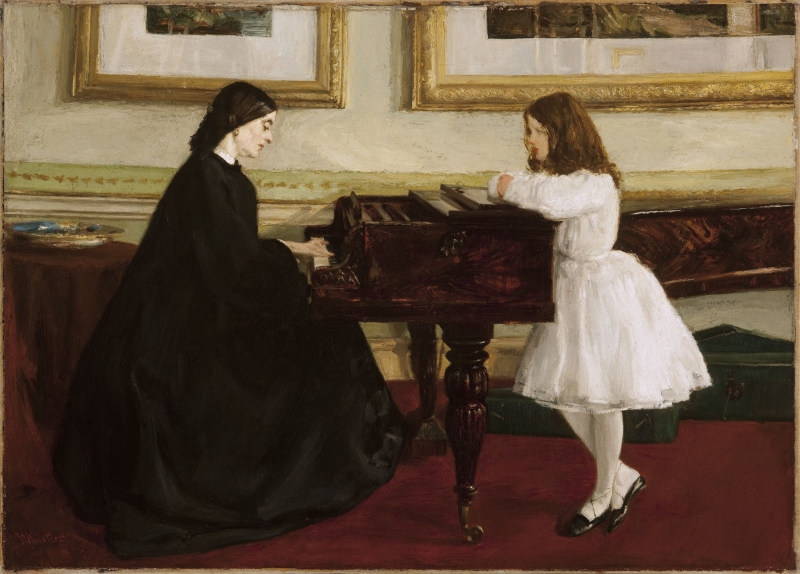At the Piano dates from 1858-1859. 1 It was started during the Christmas holiday, between 6 November 1858 and 12 January 1859, when Whistler was staying his half-sister, Deborah Delano Haden (1825-1908) , her husband, Francis Seymour Haden, Sr (1818-1910) , and family. 2
It was presumably completed by May 1859 when, according to Ignace-Henri-Jean-Théodore Fantin-Latour (1836-1904), it was submitted to the Paris Salon, rejected, and then exhibited in the studio of François Bonvin (1817-1887). 3
Last updated: 8th June 2021 by Margaret






